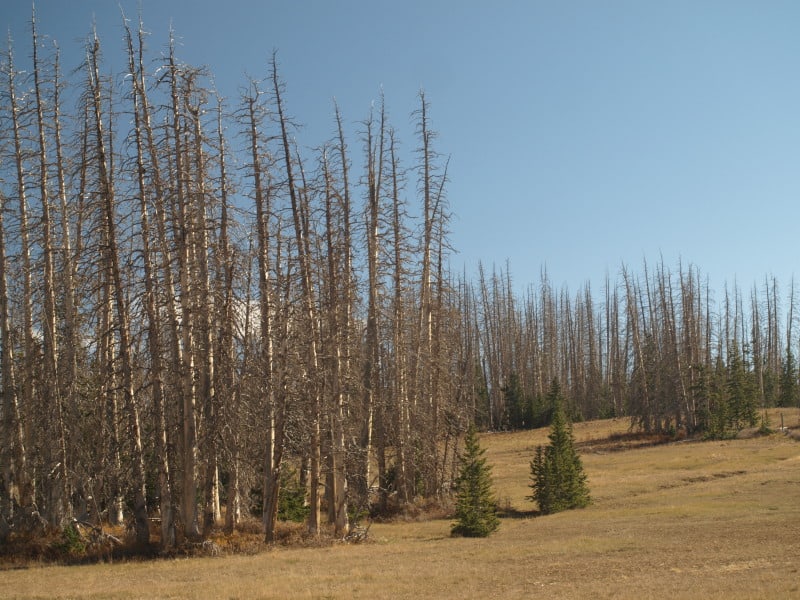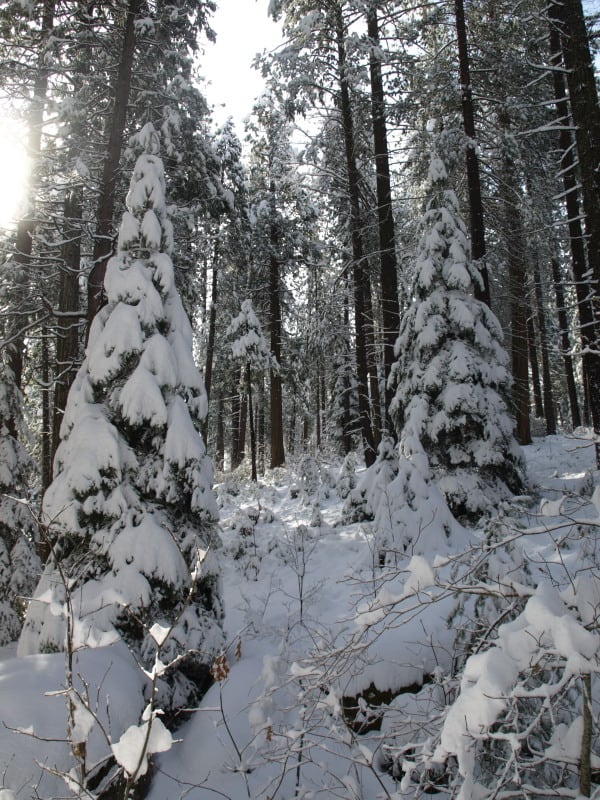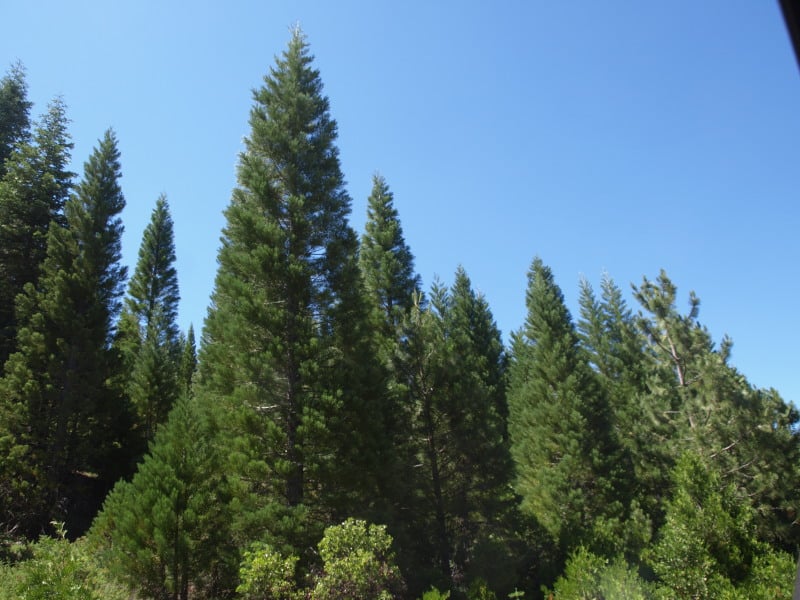According to new research, lead by researchers at the University of Arizona, trees killed in the wake of mountain pine beetle infestations in Colorado have released less carbon into the atmosphere than expected. Read about the research and hear from the scientists in this article from the University of Arizona, excerpts of which are also highlighted below. And High Country News wins the award for best headline of the day, “Good news for people who love bad news,” which contains even more information about the new research. What does this new scientific research say about the validity of the oft-repeated claims from the timber industry and others that we have to cut down our forests so that we can”lock up” that carbon in 2 x 4’s?
___________________
Massive tree die-offs release less carbon into the atmosphere than previously thought, new research led by the University of Arizona suggests. Across the world, trees are dying in increasing numbers, most likely in the wake of a climate changing toward drier and warmer conditions, scientists suspect. In western North America, outbreaks of mountain pine beetles (Dendroctonus ponderosae) have killed billions of trees from Mexico to Alaska over the last decade.
Given that large forested areas play crucial roles in taking carbon dioxide out of the atmosphere through photosynthesis and turning it into biomass, an important question is what happens to that stored carbon when large numbers of trees die.
“The general expectation we had was that when trees die on a large scale, it would lead to a big pulse of carbon into the atmosphere through microorganisms metabolizing all that dead wood,” said David Moore, an assistant professor in the School of Natural Resources and the Environment in the UA College of Agriculture and Life Sciences and one of the lead authors of the study, which is published online in the journal Ecology Letters.
“A question we are looking to answer is, ‘How does the carbon dioxide released from the forest into the atmosphere change as you have large scale tree mortality over time?”’ said second lead author Nicole Trahan, a postdoctoral researcher at the University of Colorado, Boulder.
According to co-author Russell Monson, who is the Louise Foucar Marshall Professor in the UA School of Natural Resources and the Environment, forests affect the carbon budget of the atmosphere through two dominant processes: photosynthesis, by which plants take carbon dioxide out of the atmosphere and lock it up in organic compounds, and respiration, by which plants and soil microbes release carbon dioxide back into the atmosphere. The balance of these processes determines whether a particular forest is a carbon source or a carbon sink.
After a massive tree die-off, conventional wisdom has it that a forest would go from carbon sink to carbon source: Since the soil microbes are still around, they are expected to release large amounts of the greenhouse gas carbon dioxide into the atmosphere, where it is thought to accelerate climate change.
“Surprisingly, we couldn’t find a big pulse,” said Moore, who is also a member of the UA Institute of the Environment.
Trahan added: “In the first few years after beetles have come in and killed trees, the carbon release from the surrounding soil actually goes down.”
Large amounts of dead trees, it turns out, hold on to their carbon for a long time and prevent it from quickly being released into the soil or the atmosphere. According to Moore, this might be due to several reasons: First, while trees take up carbon dioxide during the day during photosynthesis, they release some of it at night when they switch to respiration.
“Once the trees are dead, respiration by the trees goes away,” Moore said. “In addition, if you cut off the carbon that a tree put into the soil while it was alive, you reduce the ability of the soil microbes around the roots to respire.”
“After five or six years, there is a buildup of some dead plant material, leaf litter and so on, and that seems to drive the rate of respiration up again. But it never recovers to the point it was before the beetles killed the trees, at least over the span of a decade,” Moore said.
Finally, the trees studied in this project grow at higher elevations, where cooler temperatures slow the decomposition process and thereby carbon-releasing respiration.
“Overall, we discovered that after a tree die-off, the loss of carbon in the soil results less from increased respiration by microbes but more from the fact that trees are no longer sequestering photosynthesized carbon into the soil,” Moore said. “There seems to be a dampening of the carbon cycle rather than a big pulse of carbon release. So even if the forest now goes from a sink to a source of carbon dioxide, it’s not as dramatic of an effect as we thought it would be.”




